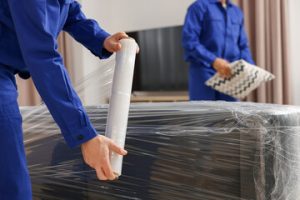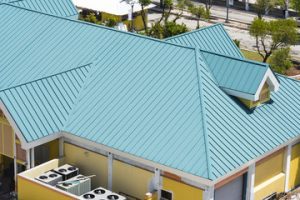Antiquariato Napoli offer a window into history. They may reflect an era’s fashion, design and cultural values. They often feature fine details that are no longer available today.

The term antique is usually used to describe items 100 years old or older. This distinction separates them from more contemporary collectibles and decorative items.
Collectables are items that are considered valuable by collectors for a number of reasons, including their rarity, history, or value. They are usually kept in pristine condition and are not regularly used. Collectables are often grouped into categories based on their genre or fandom. Popular examples include trading cards, limited-edition figurines, and memorabilia from movies, sports teams, and comic books.
When choosing a category for your collectables, consider your own interests, as well as your budget and storage space. You may want to start small and grow your collection over time, or you might choose to focus on a particular item that appeals to you. Depending on your preferences, you may also want to choose a high- or low-maintenance hobby.
If you have a passion for old items, collecting antiques can be a rewarding experience. You can find a wide range of items at auctions, estate sales, and flea markets. Online marketplaces are also an option, but you should make sure you are using a trusted site.
Vintage railroad items, particularly those that are rare, can be very valuable. For example, an old brass railroad lantern can sell for up to $500 on eBay. Items with the railroad’s name etched or embossed on the housing and glass globe are especially sought-after. Similarly, unusual items, like a heart-shaped brass railroad switch lock or an early telegraph key, are also valuable collectables.
Clocks
Antiques are items that have been in existence for a long time. They come in many different forms. Some are functional, such as clocks and watches that show the time. Others are decorative, such as art glass and furniture. Some are historical, such as Roman and Egyptian antiquities. Still others are useful, such as industrial tools and machinery. All of them have a history that gives them an interest for collectors and dealers.
Humans have been measuring time for millennia with sundials, water clocks and other methods. The invention of the mechanical clock was a major advance in time-measuring technology. The earliest mechanical clocks were large, iron-framed structures powered by falling weights attached to gear trains and regulated by friction. They were inaccurate by as much as two hours a day.
There are also special clocks that use sound, such as bells or chimes, to indicate the time. They are often used by people who can’t read, such as blind or partially sighted individuals. There are even musical clocks, like this one made by Hupefeld in 1930, that play music when the hour comes.
Today’s atomic clocks are the most accurate available. They are operated by national metrology institutes around the world. The hydrogen masers at NPL in London and other locations around the world are the new arbiters of global time.
Ceramics
Ceramics are some of the hardest and most heat resistant materials known. They range from ancient terra cotta to modern hi-tech materials. They are produced by grinding minerals and rocks into a powder, then firing them in a kiln to stick them back together as a rock again. Ceramics have many benefits compared to metals, including chemical stability and corrosion resistance.
Ceramics include both decorative items like vases, pottery and tiles and more practical items like cooking utensils, clocks, and kitchenware. They are popular among buyers because they add character to the home and serve a functional purpose. Antique home decor items also sell well, especially those that have a historic or cultural significance.
A wide variety of ceramics are available in antique malls. They can be found in both small, individual pieces and large sets such as dining room sets.
When selling ceramics, it’s important to take photos of them that are high quality. A simple trick to achieve this is to use a white shoe box and tissue paper to create a self-supporting soft box that you can place in front of the object to diffuse the light.
Another popular category is ephemera, such as old books, postcards, posters and maps. Antique collectors often seek out these items because they offer a window into the past and can provide valuable information about the history of a location or an event.
Books and Manuscripts
Whether their author’s voices are eloquent or crude, letters and diaries speak of hopes, disappointments, and accomplishments that can seem radically different or comfortingly familiar to us. By collecting, preserving, and making available these documents of the past, the Manuscript Division brings history alive, offering a sense of connection with those who came before us.
The collections in PSU Library Special Collections illustrate broad concepts in the history of the Western book, from manuscript to hand press to mechanized printing to fine and artist’s books. They also represent the diverse cultural traditions of the world, with strengths in European and Middle Eastern printed books and manuscripts.
In addition to historical maps and prints, the Special Collections contain a wide variety of rare books. These include illustrated “color-plate” books, drawing manuals, sporting and art books of the period from the renowned J. R. Abbey collection, and many other types of early printed books. The collection also includes manuscripts and archival material relating to authors, literary research, printers, political issues, film history, science and math research, and Southwest and East Asian war correspondents. Some of these materials are accessible online via Arizona Archives Online. Others await further processing. The Rare Books and Manuscripts Section (RBMS) of ACRL serves as the international voice for librarians concerned with the acquisition, organization, preservation, security, management, and use of special collections. The section offers a number of programs and services to its members.
Coins and Silver
Investing in antique items offers the unique blend of financial gain and personal satisfaction. But like any investment, advanced due diligence is important. That means taking the time to research historical pricing trends, authenticity verification methods and liquidity risks.
Collectors are drawn to antiques because of their beauty and quality, but they’re also valued for the history behind them. When specific information can be found out about a piece, its value increases greatly, such as who made it, where, when and how it was used, and the histories of all those who have owned it.
Ceramic collections can be formed on the basis of ware (porcelain, earthenware or stoneware), glaze (salt-glaze, lead-glaze or hand-painted), ornamentation (transfer-printed, applied or gilded) and form (vase, jar, teapot, plate, soup tureen or garden seat). Silver items, including flatware and decorative pieces, are also collected based on their intrinsic metal value as well as historical and numismatic significance.
Although most coins that are minted for modern circulation no longer contain Silver, the Precious Metal still holds some intrinsic value as well as a numismatic premium. Bullion investors are most interested in the dimes, quarters and half dollars that were minted with 80% Silver until 1964. Nickels were switched to a cupronickel sandwich, which contains plies of copper and nickel designed to mimic silver’s conductivity and look. These older coins can sell for much more than their face value.
Furniture
Most antique collectors look for attractive pieces with a good story and solid craftsmanship. They also like the fact that they can use them in their homes, unlike new furniture that often depreciates in value once it’s delivered and set up in a home. Some collectors specialize in particular types of items, such as snuff boxes or dolls. Others define their interests in terms of geographical areas or time periods. The most successful collectors are those who choose a niche that they can thoroughly research and become experts in.
In order to be considered an antique, a piece of furniture must be at least 100 years old. This enables the furniture to be passed down from generation to generation and still remain in good condition. Furniture is a popular area of collectables because it can be used in many different ways, and it is usually made from sturdy materials such as wood.
When buying furniture, reputable dealers can offer advice on what is an antique and what is not. They can also help buyers to select the best type of furniture for their lifestyles and tastes. Antiques can be found in a wide range of prices, depending on the quality and age of the piece, as well as the reputation of the maker. It is also important to understand the specific care requirements for an item. For example, certain wood furniture pieces from different eras require a specific cleaning process to maintain their value and appearance.








